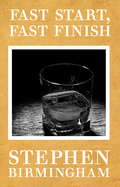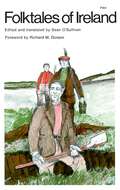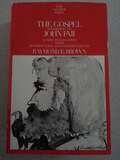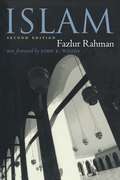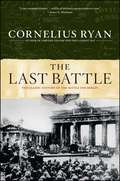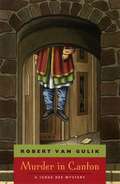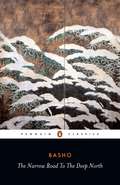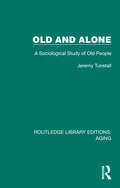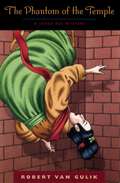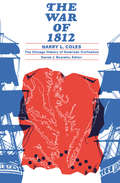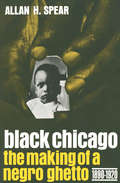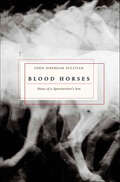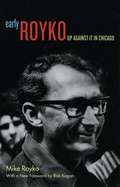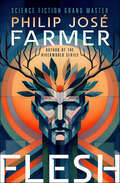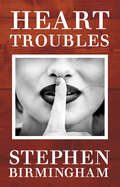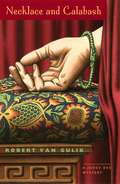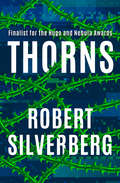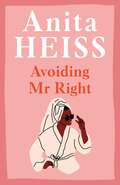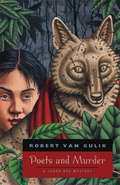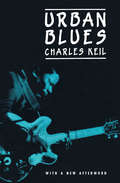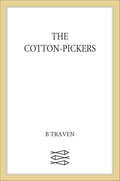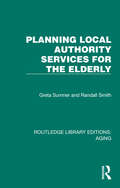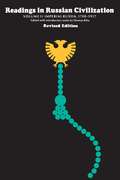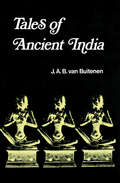- Table View
- List View
Fast Start, Fast Finish
by Stephen BirminghamA family man risks everything to pursue his artistic dreams, in this novel of marriage, betrayal, and suburban malaise by the author of The Auerbach Will. California art director Charlie Lord has all the makings of a surefire winner. But despite his good looks, wit, and sophistication, his track record shows a series of blazing starts followed by fast, ego-crushing finishes. His marriage to Nancy, complete with three almost grown-up children and an elegant house in an exclusive suburb, gave him all the trappings of happiness. Still, none of these things can satisfy Charlie&’s dreams of success on a grand scale. Now he&’s off and running once again—taking his family across the country to New York, where he hopes to further his career as an artist. But Charlie soon finds himself submerged in a sea of troubles . . . and a fevered love affair that threatens to destroy his life.
Folktales of Ireland
by Sean O’SullivanFew countries can boast such a plentitude of traditional folktales as Ireland. In 1935, the creation of The Irish Folklore Commission set in motion the first organized efforts of collecting and studying a multitude of folktales, both written as well as those of the Irish oral tradition. The Commission has collected well over a million pages of manuscripts. Folktales of Ireland offers chief archivist Sean O'Sullivan's representation of this awe-inspiring collection. These tales represent the first English language collection of Gaelic folktales. "Without doubt the finest group of Irish tales that has yet been published in English."—The Guardian "O'Sullivan writes out of an intimacy with his subject and an instinctive grasp of the language of the originals. He tells us that his archives contain more than a million and a half pages of manuscript. If Mr. O'Sullivan translates them, I'll read them."—Seamus Heaney, New Statesman "The stories have an authentic folktale flavor and will satisfy both the student of folklore and the general reader."—Booklist
The Gospel According To John: Chapters I-xii (Anchor Bible Commentaries Ser.)
by Raymond E. BrownIn the first volume of Raymond E. Brown’s magisterial three-volume commentary on the Gospel According to John, all of the major Johannine questions—of authorship, composition, dating, the relationship of John to the Synoptics (Mark, Matthew, and Luke)—are discussed. The important theories of modern biblical scholarship concerning John are weighed against the evidence given in the text and against prevailing biblical research. In sum, what is attempted is a synthesis of the major scholarly insights that bear on the Fourth Gospel. The translation—as Father Brown states at the outset—strives not for any formal beauty but rather for an accurate and contemporary version: “the simple, everyday Greek of the Gospel has been rendered into the ordinary American English of today.” The result is a translation that will strike the reader with uncommon immediacy. Father Brown also analyzes, in the appendixes, the meaning, use, and frequency of certain key words and phrases that occur in John, and examines the differences between the Johannine and Synoptic treatments of the miracle stories. The chapters of the Gospel translated here in Volume 29 (1–12) comprise the Prologue, which opens with the famous “In the beginning was the Word,” and the Book of Signs, an account of the miracles of Jesus and of his ministry.
Islam
by Fazlur RahmanFazlur Rahman's Islam is aptly titled, in that this slim volume constitutes an incisive and surprisingly comprehensive history and analysis of Islam—its history, its conflicts, its legacy—and its prospects. From Mohammed to the late twentieth century, Rahman traces the development of Islam as a religion and, more importantly, as an intellectual tradition, offering both an easily understood introduction to the faith and an impassioned argument for its future direction.
The Last Battle: The Classic History of the Battle for Berlin (A History Bestseller)
by Cornelius RyanThe classic account of the final offensive against Hitler&’s Third Reich.The Battle for Berlin was the culminating struggle of World War II in the European theater, the last offensive against Hitler&’s Third Reich, which devastated one of Europe&’s historic capitals and marked the final defeat of Nazi Germany. It was also one of the war&’s bloodiest and most pivotal battles, whose outcome would shape international politics for decades to come. The Last Battle is Cornelius Ryan&’s compelling account of this final battle, a story of brutal extremes, of stunning military triumph alongside the stark conditions that the civilians of Berlin experienced in the face of the Allied assault. As always, Ryan delves beneath the military and political forces that were dictating events to explore the more immediate imperatives of survival, where, as the author describes it, &“to eat had become more important than to love, to burrow more dignified than to fight, to exist more militarily correct than to win.&” The Last Battle is the story of ordinary people, both soldiers and civilians, caught up in the despair, frustration, and terror of defeat. It is history at its best, a masterful illumination of the effects of war on the lives of individuals, and one of the enduring works on World War II.
Murder in Canton: A Judge Dee Mystery (The Judge Dee Mysteries)
by Robert van GulikBrought back into print in the 1990s to wide acclaim, re-designed new editions of Robert van Gulik's Judge Dee Mysteries are now available. Written by a Dutch diplomat and scholar during the 1950s and 1960s, these lively and historically accurate mysteries have entertained a devoted following for decades. Set during the T'ang dynasty, they feature Judge Dee, a brilliant and cultured Confucian magistrate disdainful of personal luxury and corruption, who cleverly selects allies to help him navigate the royal courts, politics, and ethnic tensions in imperial China. Robert van Gulik modeled Judge Dee on a magistrate of that name who lived in the seventh century, and he drew on stories and literary conventions of Chinese mystery writing dating back to the Sung dynasty to construct his ingenious plots.Murder in Canton takes place in the year 680, as Judge Dee, recently promoted to lord chief justice, is sent incognito to Canton to investigate the disappearance of a court censor. With the help of his trusted lieutenants Chiao Tai and Tao Gan, and that of a clever blind girl who collects crickets, Dee solves a complex puzzle of political intrigue and murder through the three separate subplots "the vanished censor," "the Smaragdine dancer," and "the Golden Bell." An expert on the art and erotica as well as the literature, religion, and politics of China, van Gulik also provides charming illustrations to accompany his engaging and entertaining mysteries.
The Narrow Road to the Deep North and Other Travel Sketches
by Matsuo Basho'It was with aweThat I beheldFresh leaves, green leaves,Bright in the sun'When the Japanese haiku master Basho composed The Narrow Road to the Deep North, he was an ardent student of Zen Buddhism, setting off on a series of travels designed to strip away the trappings of the material world and bring spiritual enlightenment. He writes of the seasons changing, the smell of the rain, the brightness of the moon and the beauty of the waterfall, through which he sensed the mysteries of the universe. These writings not only chronicle Basho's travels, but they also capture his vision of eternity in the transient world around him.Translated with an Introduction by Nobuyuki Yuasa
Old and Alone: A Sociological Study of Old People (Routledge Library Editions: Aging)
by Jeremy TunstallWhat is it like to be an isolated old widow, living alone on the bare old-age pension? In the 1960s, the question had become a standard refrain. Originally published in 1966, this was the first full-length study by a sociologist of isolation in old age.Although the majority of old people were in no sense a problem group at the time, a substantial minority of the elderly were ‘alone’ in one or more ways. About 1.3 million people aged sixty-five and over in Britain lived alone; a large number admitted to feeling lonely, at least sometime. About a million were actually socially isolated in terms of low level and frequency of social contact. Mr Tunstall also uses a fourth category of aloneness – namely anomie (as developed by Durkheim, Merton, and Srole).This report uses careful and statistical analysis of the four types of aloneness and of specially affected groups such as the single, the recently widowed, and the housebound. But it also includes details of interviews with ten highly individual old people from suburban Harrow, booming Northampton, industrial revolution Oldham, and rural South Norfolk.The book contains a discussion of the problem of personality in isolation, and a commentary on the inadequacies of social theory about old age. Finally, the concluding chapter suggests a wide variety of policy measures which might help to alleviate social isolation in old age.
The Phantom of the Temple: A Judge Dee Mystery (The Judge Dee Mysteries)
by Robert van GulikJudge Dee presided over his imperial Chinese court with a unique brand of Confucian justice. A near mythic figure in China, he distinguished himself as a tribunal magistrate, inquisitor, and public avenger. Long after his death, accounts of his exploits were celebrated in Chinese folklore, and later immortalized by Robert van Gulik in his electrifying mysteries. In The Phantom of the Temple, three separate puzzles—the disappearance of a wealthy merchant's daughter, twenty missing bars of gold, and a decapitated corpse—are pieced together by the clever judge to solve three murders and one complex, gruesome plot. “Judge Dee belongs in that select group of fictional detectives headed by the renowned Sherlock Holmes. I assure you it is a compliment not given frivolously.”—Robert Kirsch, Los AngelesTimes Robert Van Gulik (1910-67) was a Dutch diplomat and an authority on Chinese history and culture. He drew his plots from the whole body of Chinese literature, especially from the popular detective novels that first appeared in the seventeenth century.
The War of 1812 (The\chicago History Of American Civilization Ser. #Vol. 22)
by Harry L. Coles The Chicago History of American CivilizationThis compact history of the war attempts to separate myth from reality. Professor Coles narrates the main operations on both land and sea of the three-year struggle. He examines the conflict from the British (and Canadian) as well as the American point of view, relating events in America to the larger war going on in Europe. "A balanced analysis of tactics and strategy, this book also summarizes succinctly and clearly recent scholarship on causes and describes briefly the war's military, economic, and political consequences. Coles has surveyed thoroughly the existing literature but arrives at a number of independent judgments. It is the best single-volume account of the war in all its aspects. In recounting sea battles, Coles puts aside the patriotic blinders that have for so long prevented a sensible understanding of American capabilities and strategic necessities; thus American naval victories are put in a proper perspective. And in dealing with land engagements, he has shunned the mocking and amused attitude which has so often passed for historical judgment. Undergraduates will be stimulated by the hints of modern parallels and will find useful the excellent annotated bibliography and simple maps."—Choice
Black Chicago: The Making of a Negro Ghetto, 1890–1920
by Allan H. SpearAllan Spear explores here the history of a major Negro community during a crucial thirty-year period when a relatively fluid patter of race relations gave way to a rigid system of segregation and discrimination. This is the first historical study of the ghetto made famous by the sociological classics of St. Clair Drake, E. Franklin Frazier, and others—by the novels of Richard Wright, and by countless blues songs. It was this ghetto that Martin Luther King, Jr., chose to focus on when he turned attention to the racial injustices of the North. Spear, by his objective treatment of the results of white racism, gives an effective, timely reminder of the serious urban problems that are the legacy of prejudice.
Blood Horses: Notes of a Sportswriter's Son
by John Jeremiah SullivanFrom the award-wining author of Pulphead, John Jeremiah Sullivan's first book, Blood Horses, combines personal reflections about his father and an in-depth look at the history and culture of Thoroughbred racehorses.Winner of a 2004 Whiting Writers' Award"Sullivan has found the transcendent in the horse."--Sports IllustratedOne evening late in his life, veteran sportswriter Mike Sullivan was asked by his son what he remembered best from his three decades in the press box. The answer came as a surprise. "I was at Secretariat's Derby, in '73. That was ... just beauty, you know?"John Jeremiah Sullivan didn't know, not really--but he spent two years finding out, journeying from prehistoric caves to the Kentucky Derby in pursuit of what Edwin Muir called "our long-lost archaic companionship" with the horse. The result--winner of a National Magazine Award and named a Book of the Year by The Economist magazine--is an unprecedented look at Equus caballus, incorporating elements of memoir, reportage, and the picture gallery.In the words of the New York Review of Books, Blood Horses "reads like Moby-Dick as edited by F. Scott Fitzgerald . . . Sullivan is an original and greatly gifted writer."
Early Royko: Up Against It in Chicago
by Mike RoykoCombining the incisive pen of a newspaperman and the compassionate soul of a poet, Mike Royko became a Chicago institution—in Jimmy Breslin’s words, "the best journalist of his time." Early Royko: Up Against It in Chicago will restore to print the legendary columnist’s earliest writings, which chronicle 1960s Chicago with the moral vision, ironic sense, and razor-sharp voice that would remain Royko’s trademark. This collection of early columns from the Chicago Daily News ranges from witty social commentary to politically astute satire. Some of the pieces are falling-down funny and others are tenderly nostalgic, but all display Royko’s unrivaled skill at using humor to tell truth to power. From machine politicians and gangsters to professional athletes, from well-heeled Chicagoans to down-and-out hoodlums, no one escapes Royko’s penetrating gaze—and resounding judgment. Early Royko features a memorable collection of characters, including such well-known figures as Hugh Hefner, Mayor Richard J. Daley, and Dr. Martin Luther King. But these boldfaced names are juxtaposed with Royko’s beloved lesser knowns from the streets of Chicago: Mrs. Peak, Sylvester "Two-Gun Pete" Washington, and Fats Boylermaker, who gained fame for leaning against a corner light pole from 2 a.m. Saturday until noon Sunday, when his neighborhood tavern reopened for business. Accompanied by a foreword from Rick Kogan, this new edition will delight Royko’s most ardent fans and capture the hearts of a new generation of readers. As Kogan writes, Early Royko "will remind us how a remarkable relationship began—Chicago and Royko, Royko and Chicago—and how it endures."
Flesh
by Philip José FarmerA starship crew returns to a primitive, post-apocalyptic—and deadly—Earth in this classic adventure by a Science Fiction Grand Master. After eight centuries of exploring the stars, Space Capt. Peter Stagg and his starship crew return to Earth to find a scorched planet with little plant life remaining. Civilization has changed drastically with technology reverted to the Stone Age and culture centered on a pagan fertility cult. Stagg soon finds himself initiated into the Elk fraternity. They graft antlers to his head, crowning him the new &“Sunhero.&” He is then sent on a six-month tour to repopulate the world with the help of every willing virgin. Now the crew must find a way to escape, because while the captain&’s journey might sound pleasurable, it will only end in pain . . . &“A bawdy but good yarn.&” —Analog Science Fiction and Fact&“Farmer must have had lots of fun writing this because I had quite a bit reading it.&” —Locu
Heart Troubles
by Stephen BirminghamIn this short story collection, the acclaimed author of Our Crowd offers fourteen darkly funny and poignant tales of the human heart. Stephen Birmingham is renowned for his penetrating examinations of America&’s upper classes. Here, he proves himself an equally deft hand at fiction, bringing the same knowing wit and piercing insight to the short stories in this collection. In &“She Ate Grass?,&” a boy navigates coming of age while buying whiskey for his mother&’s cocktail party. In &“Race Day,&” a shy woman endures her husband&’s ambition to join the board of an exclusive yacht club. In these and other stories, Birmingham peels back the layers of middle-class life in the late twentieth century.
Necklace and Calabash: A Judge Dee Mystery (The Judge Dee Mysteries)
by Robert vanBrought back into print in the 1990s to wide acclaim, re-designed new editions of Robert van Gulik's Judge Dee Mysteries are now available. Written by a Dutch diplomat and scholar during the 1950s and 1960s, these lively and historically accurate mysteries have entertained a devoted following for decades. Set during the T'ang dynasty, they feature Judge Dee, a brilliant and cultured Confucian magistrate disdainful of personal luxury and corruption, who cleverly selects allies to help him navigate the royal courts, politics, and ethnic tensions in imperial China. Robert van Gulik modeled Judge Dee on a magistrate of that name who lived in the seventh century, and he drew on stories and literary conventions of Chinese mystery writing dating back to the Sung dynasty to construct his ingenious plots.Necklace and Calabash finds Judge Dee returning to his district of Poo-yang, where the peaceful town of Riverton promises a few days' fishing and relaxation. Yet a chance meeting with a Taoist recluse, a gruesome body fished out of the river, strange guests at the Kingfisher Inn, and a princess in distress thrust the judge into one of the most intricate and baffling mysteries of his career. An expert on the art and erotica as well as the literature, religion, and politics of China, van Gulik also provides charming illustrations to accompany his engaging and entertaining mysteries.
Thorns (Gollancz S. F. Ser.)
by Robert SilverbergThe Science Fiction Grand Master&’s Thorns &“holds up chillingly well after all these decades. A dark pastiche upon Beauty and the Beast&” (SF Reviews). In a world where humanity has colonized the solar system and begun to explore more of the local galaxy, a vast audience follows real-life stories presented by wealthy media mogul Duncan Chalk. To satisfy his audience&’s voyeuristic needs—and his own appetite for others&’ pain—he pairs Minner Burris, an emotionally withdrawn space explorer who was captured and freakishly surgically altered by aliens, with Lona Kelvin, a suicidal seventeen-year-old girl who donated eggs for a fertility experiment that produced one hundred babies, none of whom she has been allowed to adopt or even see. Chalk promises to solve their personal problems in return for a joint performance tour. Though the love affair doesn&’t last, Chalk keeps the couple on the hook by making new offers. While Minner and Lona struggle to cope with their newfound celebrity and Chalk&’s broken promises, they will uncover the true nature of their manipulator—and risk everything to regain the humanity that has been stolen from them . . . An early exploration of media exploitation and a deep look at freak-show entertainment on a mass scale, this novel was one of the earliest of Silverberg&’s mature masterworks. &“Masterful . . . This is a sophisticated novel, beautifully written, intelligent and insightful, with wonderful dialogue and a satisfying conclusion.&” —Fantasy Literature &“Silverberg&’s brooding, post-utopian, rumination has the makings of a great science fiction novel. . . . A worthwhile read which rambles along a dark path . . . Well done.&” —Science Fiction Ruminations
Avoiding Mr Right
by Anita HeissA hilarious and heart-felt story of love, self-discovery and finding true happiness, from award-winning Wiradyuri author, Anita Heiss. Peta Tully thinks taking a man to Melbourne would be like taking a sandwich to a smorgasbord. That's why she is leaving him at home. Peta loves her life in Sydney. She has a great job, three deadly best friends – Alice, Dannie and Liza – and a doting boyfriend. The only trouble is, she&’s not sure she&’s ready to settle down yet. So when she&’s offered a twelve-month contract in Melbourne, which might just win her the job of her dreams, she doesn&’t have to think twice. She packs her bags and jumps on a plane. Peta takes a vow of celibacy, but with Melbourne filled with eligible bachelors, sticking to it proves harder than she imagined. As her mum always says, though, being faithful means you can still look at the menu, you just can&’t order off it … Right?
Poets and Murder: A Judge Dee Mystery (The Judge Dee Mysteries)
by Robert van GulikJudge Dee, the master detective of seventh-century China, sets out to solve a puzzling double murder and discovers complex passions lurking beneath the placid surface of academic life. A mild-mannered student is rumored to have been slain by a fox-demon, while a young dancer meets her death as she dresses to perform for the magistrate's illustrious dinner guests—an obese Zen monk revered for his calligraphy, a beautiful poetess accused of murder, and the past president of the imperial academy. To connect the present crimes with betrayals and adulteries from decades past, the clever judge must visit a high-class brothel and the haunted shrine of the Black Fox. From the moment the young scholar is found dead on the eve of the Autumn Festival, the pace never lets up. "The China of old, in Mr. van Gulik's skilled hands, comes vividly alive again."—Allen J. Hubin, New York Times Book Review "If you have not yet discovered Judge Dee, I envy you that initial pleasure. . . . For the magistrate of Poo-yang belongs in that select group headed by Sherlock Holmes."—Robert Kirsch, Los Angeles Times
Urban Blues
by Charles KeilCharles Keil examines the expressive role of blues bands and performers and stresses the intense interaction between performer and audience. Profiling bluesmen Bobby Bland and B. B. King, Keil argues that they are symbols for the black community, embodying important attitudes and roles—success, strong egos, and close ties to the community. While writing Urban Blues in the mid-1960s, Keil optimistically saw this cultural expression as contributing to the rising tide of raised political consciousness in Afro-America. His new Afterword examines black music in the context of capitalism and black culture in the context of worldwide trends toward diversification. "Enlightening. . . . [Keil] has given a provocative indication of the role of the blues singer as a focal point of ghetto community expression."—John S. Wilson, New York Times Book Review"A terribly valuable book and a powerful one. . . . Keil is an original thinker and . . . has offered us a major breakthrough."—Studs Terkel, Chicago Tribune "[Urban Blues] expresses authentic concern for people who are coming to realize that their past was . . . the source of meaningful cultural values."—Atlantic "An achievement of the first magnitude. . . . He opens our eyes and introduces a world of amazingly complex musical happening."—Robert Farris Thompson, Ethnomusicology "[Keil's] vigorous, aggressive scholarship, lucid style and sparkling analysis stimulate the challenge. Valuable insights come from treating urban blues as artistic communication."—James A. Bonar, Boston Herald
An Atlas of Cat Anatomy
by Hazel E. Field Mary E. TaylorAn Atlas of Cat Anatomy can help a student learn twice as much as he could in the same amount of time using only a written description. The book is spiral bound and stands like an easel, taking a minimum amount of space in the work area. Altogether there are fifty-seven plates featuring the various parts and organ systems in their actual size, making identification remarkably easy. A brief verbal description accompanies each plate. In addition, the extensive glossary includes synonymous terms, derivations, definitions, and keys to pronunciation.
The Cotton-Pickers
by B. TravenThe first novel from the elusive author of The Treasure of the Sierra Madre.Set in the 1920s in Mexico, B. Traven’s The Cotton-Pickers tells the story of Gerald Gales, who drifts in and out of jobs--on a cotton plantation, an oil field, in a pastry shop, and on a ranch--exposing the dangerous exploitation at each station and fomenting workers’ rights along the way. Adventurous, funny, and full of humanity, TheCotton-Pickers challenges and delights readers to this day. "B. Traven is coming to be recognized as one of the narrative masters of the twentieth century." The New York Times
Planning Local Authority Services for the Elderly (Routledge Library Editions: Aging)
by Greta Sumner Randall SmithIn the 1960s, planning the development of services for the elderly was a subject of considerable importance in Britain, both because existing services were known to be inadequate, and because the proportion of older people, especially of those over seventy-five, was expected to increase during the next thirty years. Originally published in 1969, this book describes how a sample of local authorities were planning their services for the elderly, how they estimated the need for services and the availability of resources, and how they linked their plans with those of other organisations.
Readings in Russian Civilization Volume II: Imperial Russia, 1700–1917 (None Ser.)
by Thomas Riha"This new and enlarged version of Readings in Russian Civilization is the result of fairly extensive revisions. There are now 72 instead of 64 items; 20 of the selections are new. The first volume has undergone the least change with 3 new items, of which 2 appear in English for the first time. In the second volume there are 6 new items; all of them appear in English for the first time. The third volume has undergone the greatest revision, with 11 new items, of which 6 are newly translated from the Russian. It is the editor's hope that items left out in the new edition will not be sorely missed, and that the new selections will turn out to be useful and illuminating. The aim, throughout, has been to cover areas of knowledge and periods which had been neglected in the first edition, and to include topics which are important in the study of the Russian past and present. "The bibliographical headnotes have been enlarged, with the result that there are now approximately twice as many entries as in the old edition. New citations include not only works which have appeared since 1963, but also older books and articles which have come to the editor's attention."—From the Editor's Preface ". . . a judicious combination of seminal works and more recent commentaries that achieves the editor's purpose of stimulating curiosity and developing a point of view."—C. Bickford O'Brien, The Russian Review "These three volumes cover quite well the main periods of Russian civilization. The choice of the articles and other material is made by a competent and unbiased scholar."—Ivan A. Lopatin, Professor of Asian and Slavic Studies, University of Southern California
Tales of Ancient India
by J.A.B. van Buitenen"This admirably produced and well-translated volume of stories from the Sanskrit takes the Western reader into one of the Golden Ages of India. . . . The world in which the tales are set is one which placed a premium upon slickness and guile as aids to success. . . . Merchants, aristocrats, Brahmins, thieves and courtesans mingle with vampires, demi-gods and the hierarchy of heaven in a series of lively or passionate adventures. The sources of the individual stories are clearly indicated; the whole treatment is scholarly without being arid."—The Times Literary Supplement "Fourteen tales from India, newly translated with a terse and vibrant effectiveness. These tales will appeal to any reader who enjoys action, suspense, characterization, and suspension of disbelief in the supernatural."—The Personalist
